Search
Did you mean: Copan?
Search Results
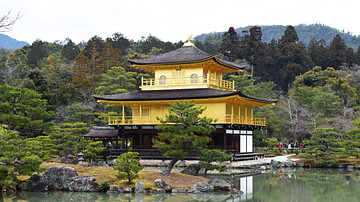
Image
Kinkakuji Temple in Kyoto, Japan
Kinkakuji Temple or the "Temple of the Golden Pavilion" was constructed in the 1390s CE as the retirement villa for Shogun Ashikaga Yoshimitsu (r. 1368–1394 CE). It is comprised of a three-story pavilion — covered in luxurious gold leaf...
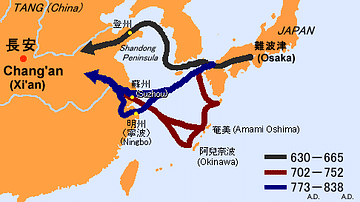
Article
Ancient Japanese & Chinese Relations
Relations between ancient Japan and China have a long history, and in certain periods the exchange of political, religious and cultural practices between the two was intense. China, the much older state and the more developed, passed on to...
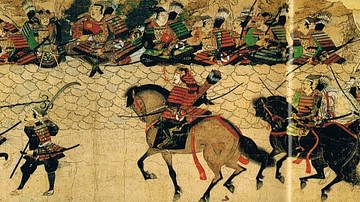
Image
Mongol Invasion of Japan, 1281 CE
A detail showing the failed Mongol attack on the defensive walls of Hakata, Japan in 1281 CE. From the Mongol Scroll, aka the 'Illustrated Account of the Mongol Invasion of Japan.' Commissioned by Takezaki Suenaga, 1293 CE.
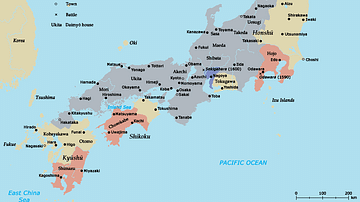
Image
Map of Japan in the 16th Century CE
A map of Japan during the Azuchi-Momoyama period (1568-1600 CE).
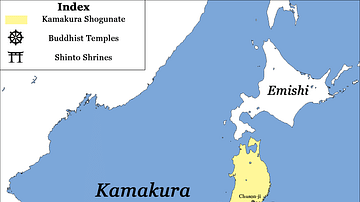
Image
Major Temples and Shrines of Japan circa 1200 CE, Kamakura Shogunate
This map depicts all major Buddhist temples and Shinto shrines of Japan around the year 1200 CE. Notice that many renowned temples (such as the famous Kinkaju-ji) have not yet been built at that time. The map highlights the city of Kamakura...

Image
Sea Routes from Ancient Japan to China
A map illustrating possible sea routes used for political and cultural embassies from ancient Japan to Tang Dynasty China.
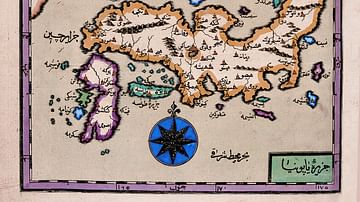
Image
Map of Japan by Katip Çelebi
Map of Japan by Katip Çelebi (d. 1657), geographer of the Ottoman Empire, in his famous geographic dictionary, Kitab-ı Cihannüma (View of the World).
Cambridge University Library.

Image
Agata Shrine in Uji, Japan
The Agata were tribal units under the reign of the Yamato court (c. 300-650 CE), which held sway over western Japan. Particularly in the Nara and Kyoto areas, the agata played important political and ceremonial roles. The name of the Agata...
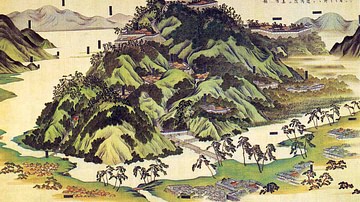
Definition
Azuchi-Momoyama Period
The Azuchi-Momoyama Period (Azuchi-Momoyama Jidai, aka Shokuho Period, 1568/73 - 1600 CE) was a brief but significant period of medieval Japan's history which saw the country unified after centuries of a weak central government and petty...
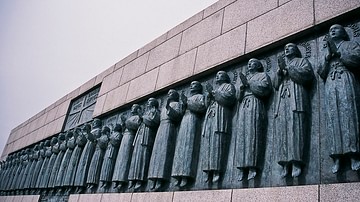
Image
Memorial of the 26 Martyrs of Japan in Nagasaki
Memorial of the 26 Martyrs of Japan in Nagasaki, who were executed for their Christian beliefs in 1597, after Japan had outlawed the religion. Canonised by the Catholic Church, the martyrs were tortured before their execution, with the event...